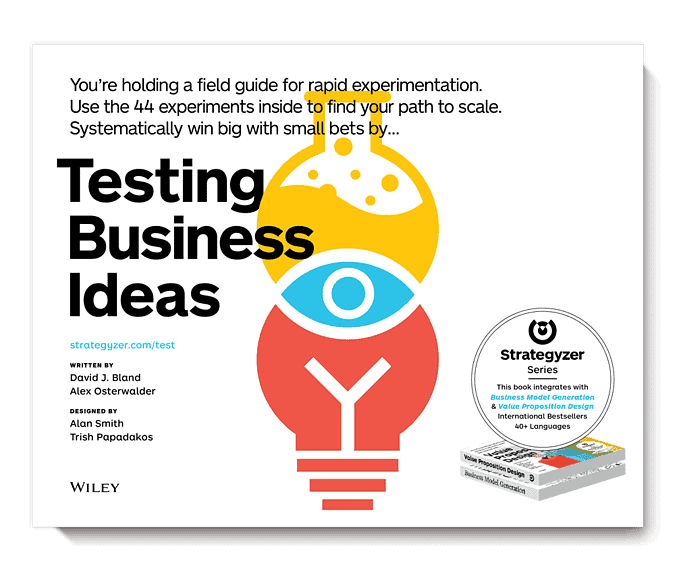What is important about this book
Today, on average, 7 out of 10 innovations do not get the desired results.
The authors assume that this largely depends on the process of definition, experimentation and development of these ideas and, with a very practical approach, they provide over 40 examples of tools and methodologies for developing experimentation and project validation of processes and ideas.
“Invention is not disruptive. Only customer adoption is disruptive” Jeff Bezos
Structure and contents of the book
The text is divided into 4 chapters, each of which corresponds to a different phase of the experimentation: design, test, experimentation and validation, mindset.
Through the Canvas Strategyzers, the reader is guided through the definition of the needed operational steps that can turn an hypothesis into a business, through a structured analysis and testing phase.
The book consists of graphic tables that guide the reader along the path of creation, experimentation and realization of the idea.
The creation of an appropriate mindset is fundamental for the development of each phase. The importance of the business climate and culture to facilitate every type of process and experiment is central throughout the book.
Experimentation can evolve at any stage only in conditions of responsibility and proactivity of each team member. Compared to other texts of the same series, this time people prevail over the model: without an effectively guided team and without a broad vision and willing to experiment, there are no models that can generate change or evolution.
Reading instructions
The book is aimed at three target readers: entrepreneurs, corporate innovators and freelancers.
The authors, inventors of the famous Business Canvas Model, offer a collection of models and tools for facilitation easy to use. To do this, they use a clear infographic that allows the reader to study the process and immediately see what steps are needed to advance in the experimentation and implementation of the initial idea.
It is a book of simple use but it still requires a good knowledge of canvases and their use in facilitation. Like other texts of the Strategyzer series, the risk is that the clear and colored infographics could mislead the reader and appear too simple and almost trivial in the concrete application.
In this case, more than in others, it is important to keep the context of use in mind, as well as the objective to be reached in order to better exploit the tools by creating effective experimentations.
